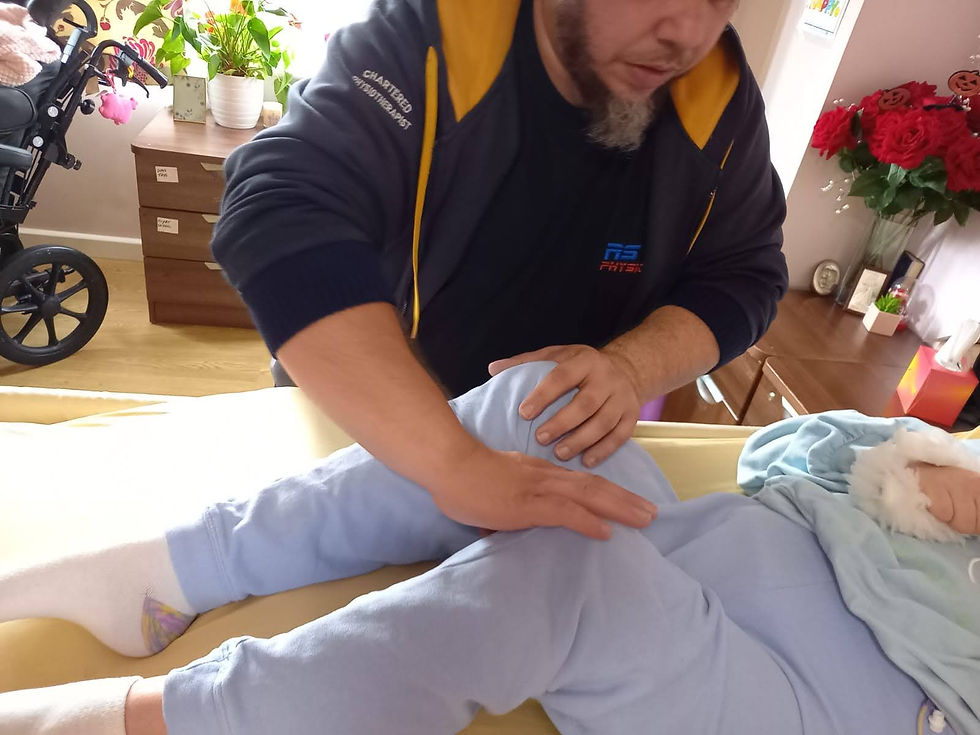Retro-Walking. No, it is Not Another Episode of the Walking Dead Series
- Pawel Ciecierski MSc Physiotherapy MCSP HCPCreg

- Jul 24, 2023
- 4 min read
Updated: Aug 1, 2023

Hey all.
Did you watch the Walking Dead Series? Did you get tired of it? Did you witness a single Zombie walking backwards? Love to see that.
In this blog, I explored one of the rehabilitation techniques for patients with neurological conditions ( and not only, but will concentrate on neuro).
Let's delve into the fascinating world of retro-walking, a unique exercise that holds tremendous potential for enhancing the lives of individuals facing neurological challenges. Based on scientific evidence and historical wisdom (straight from China) and interesting trends in India, retro walking offers a range of physical and cognitive benefits, making it a valuable addition to neurorehabilitation programs.
Let's add some science behind Retro-Walking and not so much science as well.
Always Balance and Coordination:
Many neurological conditions can often lead to impaired balance and coordination, increasing the risk of falls and impacting daily activities. Retro-walking demands heightened coordination and balance control compared to walking forward, making it an excellent exercise for improving these functions (1). By incorporating retro-walking into neurorehabilitation, patients can enhance their stability and regain confidence in their movements. But remember there is a benefit from the sidewalk as well. They must be supervised for safety.
We must Mention Almighty Muscular Strength and Gait Training:
Walking backward requires the engagement of specific muscles, including the hip extensors, which play a crucial role in walking stability and posture (2). Many neurological patients experience muscle weakness and gait abnormalities. Retro-walking can target these weaker muscles, promoting their strength and function, and aiding in gait training (3). Proper foot placement and weight transfer learned during retro-walking can translate to improved overall gait mechanics. In many cases, additional aid might be required to make sure it's safe and effective. I don't like you to cheat and compensate when you don't have to.
Cognitive Function:
Neurological conditions like stroke, MS Parkinson and many more can impact cognitive function, affecting memory, attention, and concentration. Retro-walking requires increased attention to the task at hand, making it an effective cognitive exercise (4). By incorporating retro-walking into neurorehabilitation programs, we can potentially enhance your cognitive abilities and improve your overall mental well-being.
Variety and Motivation:
Let's remember. Neurorehabilitation can be challenging, and maintaining your engagement is crucial for successful outcomes. Introducing retro walking as a novel and enjoyable exercise can add variety and excitement to your program, motivating you to stay committed to your journey toward recovery.
The Historical Wisdom: Retro-Walking in Ancient China
And that's where things become a little bit hairy, but I have to mention this with a pinch of salt as it is not really following the Evidence-based practice I am happily promoting. The roots of retro-walking date back to ancient China, where it was believed to hold profound health benefits. In China's ancient Mountain and Sea scripture, the incredible abilities of an itinerant immortal who could walk backward with astounding speed were documented (5). Since then, retro-walking has been a popular practice in China, considered a method for correcting past mistakes and sins (6).
And new trend in India
While researching for this blog I went across this event. For your information, if you feel like participating, Mumbai hosted its first-ever Backathon event on World Heart Day, organized by a health check-up company to raise awareness about heart diseases among all age groups in the urban population. Over 350 participants walked backward from Old City Theatre Building to Shiv Sena Bhawan, covering a distance of over one and a half kilometers. The event aimed to promote a healthy lifestyle for a healthy heart, with backward walking shown to increase heart rate, burn more calories, and improve balance and flexibility. Doctors present at the event emphasized the benefits of retro-walking for overall well-being and reducing the risk of heart disease.
Real-Life Implementation in Neuro Physiotherapy:
Incorporating retro-walking into neurorehabilitation can be a rewarding and enjoyable experience for both patients and therapists. You can engage in retro-walking sessions within a safe and supervised environment, ensuring a reduced risk of falls and injuries. Starting with short distances and gradually increasing the intensity and duration of retro-walking can lead to successful outcomes. Please make sure you are always supervised and know your surroundings or wear a helmet.
Remember, retro-walking should always be undertaken under the guidance of a qualified healthcare professional, taking into account each patient's specific needs and limitations.
References:
1. Park DS, Lee G. Effect of backward walking exercise on walking balance and lower limb muscle activation. J Phys Ther Sci. 2016;28(8):2277-80.
2. Tamburella F, Scivoletto G, Cosentino E, Foti C, Molinari M. Walking backwards to assess and improve gait in patients with incomplete spinal cord injury: a pilot study. Spinal Cord. 2013;51(5):423-7.
3. Patterson KK, Parafianowicz I, Danells CJ, Closson V, Verrier MC, Staines WR, et al. Gait asymmetry in community-ambulating stroke survivors. Arch Phys Med Rehabil. 2008;89(2):304-10.
4. Tomporowski PD, Audiffren M, Zagrodnik J. Effects of acute bouts of exercise on cognition. Acta Psychol (Amst). 2018;190:1-3.
5. Swartz JB. Backward walking, a forgotten art. Can Fam Physician. 1992;38:2391-3.
6. Harrison JE. Chinese Anecdotes of Celestial Immortals. University of California Press; 1997.





Comments